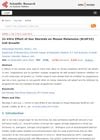RU58841
aka - ru
- PSK-3841
- HMR-3841
🛒 Where to find RU58841
Tracking 8 topical products and 5 raw products by companies like Amazon, Anageninc, Chemyo and MV supplements . View all 13 products »RU58841 a novel, topical anti-androgen, targets conditions like androgenetic alopecia, acne, and hirsutism by blocking androgen receptors. Known initially and in various stages of development as RU58841, HMR3841, and PSK3841, this compound inhibits the action of dihydrotestosterone (DHT) on hair follicles, potentially slowing or reversing hair loss. Despite its high affinity for androgen receptors and promising results in studies demonstrating its efficacy in regrowing hair, RU58841 remains unapproved by regulatory bodies like the FDA.
RU58841 is available for purchase in some countries and through online platforms, but its legal and unregulated status poses questions about safety and efficacy. The absence of official approval and classification for research purposes limit its accessibility and use to the gray market.
The community exhibits mixed sentiment towards RU58841, with discussions revolving around its effectiveness, safety concerns, and the challenges posed by its unapproved status. Testimonials often emphasize the need for cautious consideration and consultation with healthcare professionals before use, reflecting a broader search for alternative solutions beyond conventional treatments like finasteride and minoxidil. Despite some positive online testimonials and experiences shared on forums, the lack of comprehensive clinical trials and official recognition leaves a gap in the understanding of RU58841's long-term safety and efficacy.
The compound's development has been marked by changes in nomenclature and ownership, with no entity pursuing official approval for its use as an anti-androgen despite evident interest and potential. This leaves RU58841 in limbo, with its efficacy acknowledged by some in the community but its use hindered by regulatory, safety, and legal hurdles.
Research
20 / 692 results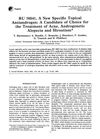
research RU 58841, A New Specific Topical Antiandrogen: A Candidate of Choice for the Treatment of Acne, Androgenetic Alopecia, and Hirsutism
research RU 58841-Myristate Prodrug Development for Topical Treatment of Acne and Androgenetic Alopecia

research Evaluation of RU58841 as an Anti-Androgen in Prostate PC3 Cells and a Topical Anti-Alopecia Agent in the Bald Scalp of Stumptailed Macaques
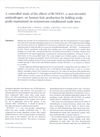
research A Controlled Study of the Effects of RU58841, a Non-Steroidal Antiandrogen, on Human Hair Production by Balding Scalp Grafts Maintained on Testosterone-Conditioned Nude Mice
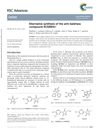
research Alternative Synthesis of the Anti-Baldness Compound RU58841

research Dose-Dependent and Long-Term Effects of RU58841 (Androgen Receptor Blocker) on Hair Growth in the Bald Stumptailed Macaque

research Significance of RU58841 as a Therapeutic Agent Affecting Androgen Receptor Molecular Interactions in Human Hair Follicles
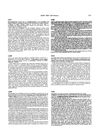
research The Effect of Topical RU58841 (Androgen Receptor Blocker) Combined with Minoxidil on Hair Growth in Macaque Androgenetic Alopecia
research A Controlled Study of the Effects of RU58841, a Non-Steroidal Antiandrogen, on Human Hair Production by Balding Scalp Grafts Maintained on Testosterone-Conditioned Nude Mice
research A Double Blind, Randomised, Vehicle-Controlled, Safety and Tolerance Study of Topical PSK 3841 Solution at 5% Administered Twice Daily Over Four Weeks to Healthy Caucasian Males with Androgenetic Alopecia
research A Multi-Centre, Double-Blind, Randomised, Vehicle-Controlled Study for a Quantitative Estimation of Hair Re-Growth in Male Subjects with Androgenetic Alopecia Treated Over 6 Months with Two Ethanolic PSK 3841 Solutions (2.5% and 5%)
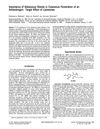
research Importance of Sebaceous Glands in Cutaneous Penetration of an Antiandrogen: Target Effect of Liposomes
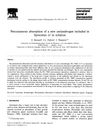
research Percutaneous Absorption of a New Antiandrogen Included in Liposomes or in Solution
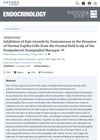
research Inhibition of Hair Growth by Testosterone in the Presence of Dermal Papilla Cells from the Frontal Bald Scalp of the Postpubertal Stumptailed Macaque
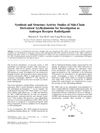
research Synthesis and Structure–Activity Studies of Side-Chain Derivatized Arylhydantoins for Investigation as Androgen Receptor Radioligands
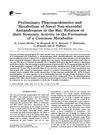
research Preliminary Pharmacokinetics and Metabolism of Novel Non-Steroidal Antiandrogens in the Rat: Relation of Their Systemic Activity to the Formation of a Common Metabolite
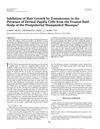
research Inhibition of Hair Growth by Testosterone in the Presence of Dermal Papilla Cells from the Frontal Bald Scalp of the Postpubertal Stumptailed Macaque
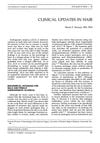
research Clinical Updates in Hair
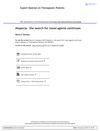
research Alopecia: The Search for Novel Agents Continues
